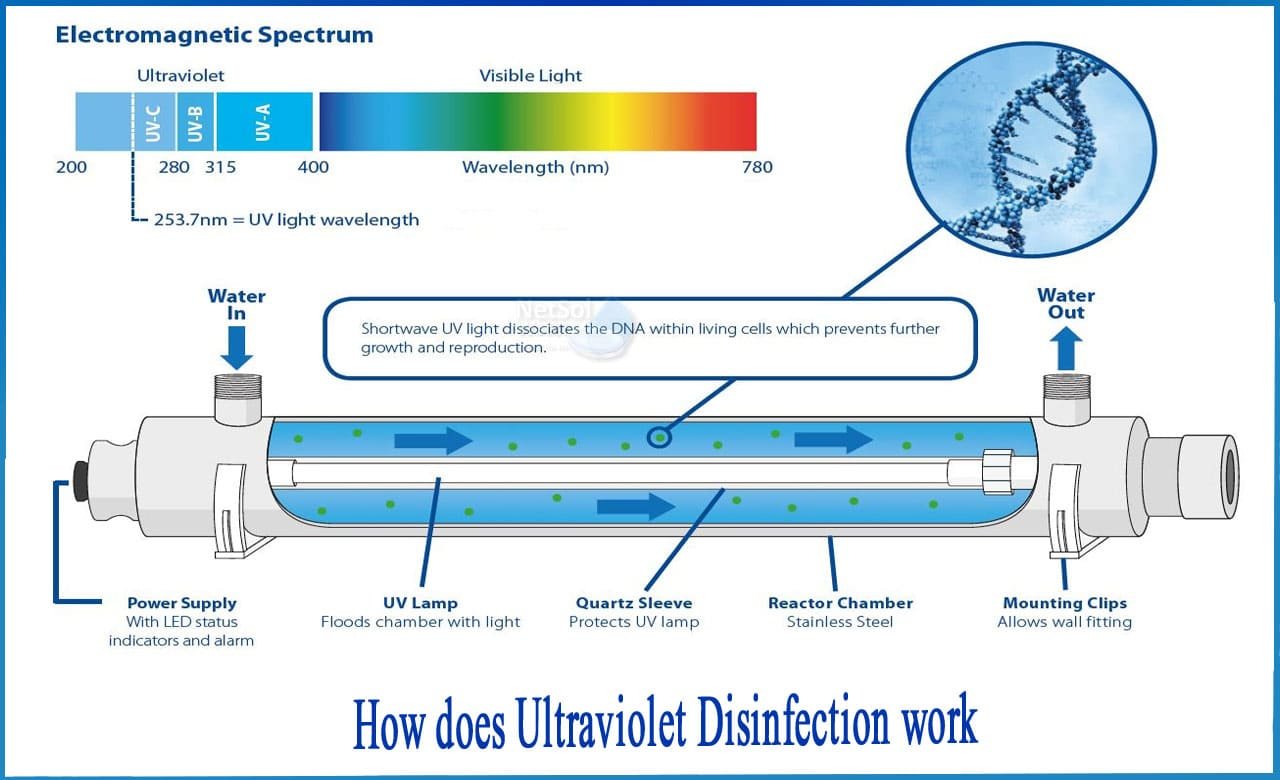Introduction To The Difference Between The Reverse OSMOSIS AND ULTRA FILTRATION
Different pore size:
Water obtained from natural sources such as dams, streams, bores and rainwater tanks may contain microorganisms that can pose a risk to your health. The Department of Health recommends that all naturally sourced water should be professionally tested and treated before it is used for drinking, bathing, filling swimming and paddling pools, food preparation or cooking. A number of water treatment systems can be used to remove microbiological contaminants that may cause illness. Ultra Violet (UV) light disinfection is one water treatment system that can be used to remove most forms of microbiological contamination from water.
What is UV light?
UV light is part of natural sunlight. It cannot be seen as UV light is between visible light and x-rays.

How does UV light kill microorganisms?
When UV light enters a microorganism its energy will damage the microorganism’s cellular function so that it will not be able to grow.
Is UV light effective against all microorganisms?
Yes. UV light is normally effective against all viruses, bacteria and protozoa. However, some microorganisms such as Cryptosporidium and Giardia have protective or thick cell walls that some low power UV light systems are not able to penetrate. (It is important to make sure the UV light disinfection systems are specifically designed to kill these microorganisms if necessary.)
Does UV light work in all water conditions?
No. UV light will only travel in a straight line so any shadow or obstruction will reduce its efficiency. Water that is not filtered can contain iron, manganese and other particles that can either absorb or scatter UV light reducing the effectiveness of the disinfection system. Microorganisms that are able to pass through protected by shadows created by dirt, debris or other microorganisms may be able to survive treatment.
Should I filter my water before UV light disinfection?
Yes. It is important to filter water before treatment with a UV light to make sure that all suspended particles are removed. UV light is not a filter so microorganisms and suspended matter will not be removed from the treated water.
What happens if the electricity fails?
UV light disinfection systems require a continuous power supply to power the light bulb. If the power fails or falls below the correct operating level the UV light intensity will fail or fall and as a result the system will not be able to safely disinfect water. The Department of Health recommends that UV light systems are interconnected to water pumps so that in the event of a power failure untreated water will not be supplied.
Is disinfection maintained throughout the water supply system?
No, UV light disinfection systems will only disinfect water at the point of contact. As soon as water leaves the UV light disinfection system recontamination from back flow, breaks and biofilms (slime) can occur as there is no residual disinfectant in the water. Well designed water treatment systems always locate UV light disinfection systems as close to the point of use as possible.
Should I clean the pipe system downstream from a UV water treatment unit?
Yes, over time a biofilm (or slime) may grow in a water supply system treated with UV light. This may require occasional treatment with chlorine to remove any biofilm within the pipes. To remove biofilms flush all pipes with a 1mg/L solution of chlorinated water making sure to open all taps to allow all chlorinated water to drain.
Do UV light disinfection systems require maintenance?
Yes. All UV light systems will require maintenance. UV light tubes and lamps will require regular replacement. Teflon and quartz glass tubes within the unit will require cleaning to remove algae and other deposits. It is recommended that you follow the maintenance procedures specified by the manufacturer or product supplier.
Should I test water that has been treated with UV light?
Yes, it is recommended that you test treated water for the presence of microorganisms every month to ensure water is being adequately disinfected. Water samples should be tested by a National Association of Testing Authorities (NATA) accredited laboratory. Laboratories can be found in the yellow pages phone directory under the heading “Analysts”.
Is it necessary to treat scheme drinking water with UV light?
It is not necessary to further disinfect scheme drinking water. The Department of Health continually monitors the microbiological and chemical quality of drinking water supplied by all licensed scheme drinking water providers to ensure that it is safe to consume.
Tags
Waste Water Treatment Coimbatore, Tamilnadu, Chennai, Madurai, Kerala, Karnataka, Packaged Sewage Treatment Plant Manufacturers, Ultraviolet Disinfection.


